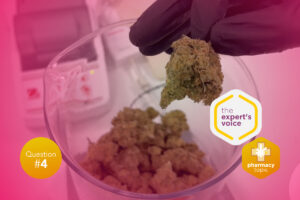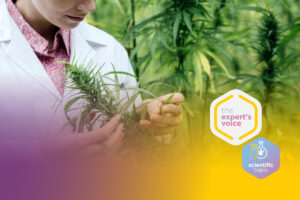Last decade has witnessed accelerated technical standardization advancements in medical cannabis production life cycle and quality of the materials and procedures used in the process, making significant steps forward to pharmaceutical grade products that grant approved therapies, helping worldwide patients with multiple sclerosis, glaucoma, arthritis, epilepsy and many others. With the intensifying scientific research, we observe more and more potential for pharmaceutical applications, which leads to increased demand for higher quality products and consequentially, better production facilities and higher standards.
An average indoor cultivation facility of medical cannabis produces significant carbon footprint as it consumes immense amounts of electricity. In USA, based on location, facilities produce an estimated amount of 2,283 to 5,184 kg CO2-equivalent emissions per kg of dried flower. These greenhouse emissions are largely attributed to electricity production and natural gas consumption from indoor environmental controls, high-intensity grow lights and the supply of carbon dioxide for accelerated plant growth. This example provides a good picture of environmental impact that this industry has and thus transmitting a signal that there is a good reason for engineering improvements. We are starting to notice a new trend, focusing on either significantly lowering these emissions, or in some cases, trying to even use the CO2 from the environment itself for the indoor facility needs.
As a responsible society we are trying to become more and more aware of climate changes, pollution, sustainable energy and protection of the environment, which creates more and more initiatives in many industrial sectors in order to minimize the effect our production power has on the planet. We have noticed many countries and governments not only setting up new standards and guidelines for these kind of production facilities, but also rewarding new production facilities that put a strong pressure on the environmental impact issues. One of the new standard implementations are the Cannabis Environmental Best Management Practices guides, which we can hope to see more spread in the near future.
Carbon negative facilities mainly focus on circular economics, using food waste into usable power (and thus dodging the production of methane) that in combination with solar panels manages total electricity demands of the facility. Heat and excess CO2 are used for heating, cooling and feeding the plants while facility uses external air and CO2 supply, therefore becoming carbon negative.
New engineering solutions and innovations play well with overall environmental politics and solve many problems while lowering consumption and cost of the entire cultivation process, reducing overall agricultural greenhouse emissions as well and with new Cannabis Environmental Best Management Practices we are looking into more sophisticated and advanced engineering level of indoor medical cannabis production.
Bibliography
Anderson, B., Policzer, J., Loughney, E. & Rodriguez, K. Energy Use in the Colorado Cannabis Industry – Fall 2018 Report (The Cannabis Conservancy, 2018)
Crandall, K. A Chronic Problem: Taming Energy Costs and Impacts from Marijuana Cultivation (EQ Research, 2016)
DPHE. Cannabis environmental best management practices guide. Dever Publich Health Environment; 2018
Samburova V, McDaniel M, Campbell D, Wolf M, Stockwell WR, Khlystov A. Dominant volatile organic compounds (VOCs) measured at four Cannabis growing facilities: pilot study results. J Air Waste Manag Ass. 2019
Silvey B. Characterization of occupational exposure to airborne contaminants in an indoor cannabis production Facility. University of Washington; 2019
Summers, H.M., Sproul, E. & Quinn, J.C. The greenhouse gas emissions of indoor cannabis production in the United States. Nat Sustain 4, 644–650 (2021)
The 2018 Cannabis Energy Report (New Frontier Data, 2018)
This is the abstract of our expert Dominik Marko’s speech which will be presented during ISPE – Facility of the Future Conference on Jan, 31 2023 – Learn more here: https://ispe.org/conferences/2023-facilities-future-conference/agenda#na23cefeb-ses402





